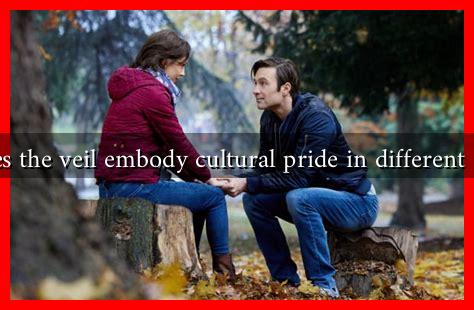-
Table of Contents
How Does the Veil Embody Cultural Pride in Different Contexts?
The veil, a piece of fabric that has been worn by women across various cultures for centuries, serves as a powerful symbol of identity, tradition, and pride. While often viewed through the lens of oppression or controversy, the veil can also represent empowerment and cultural heritage. This article explores how the veil embodies cultural pride in different contexts, highlighting its significance in various societies and the narratives that surround it.
The Veil in Islamic Cultures
In many Islamic cultures, the veil, or hijab, is worn as a sign of modesty and religious devotion. For many Muslim women, wearing the hijab is a personal choice that reflects their faith and cultural identity. The hijab can be seen as a form of empowerment, allowing women to express their beliefs and values in a society that may not always understand or accept them.
- Religious Significance: The hijab is often viewed as a commandment from God, making it a deeply spiritual practice for many women.
- Cultural Identity: In countries like Egypt and Turkey, the hijab is intertwined with national identity, representing a connection to cultural heritage.
- Empowerment: Many women report feeling empowered by their choice to wear the hijab, as it allows them to assert their identity in a world that often objectifies women.
For instance, a study conducted by the Pew Research Center found that 62% of Muslim women in the U.S. who wear the hijab feel it is an important part of their identity. This statistic underscores the veil’s role as a source of pride and self-expression.
The Veil in Western Contexts
In Western societies, the veil often sparks debate and controversy, particularly in relation to issues of freedom and oppression. However, many women in these contexts also wear the veil as a statement of cultural pride and resistance against stereotypes.
- Counteracting Stereotypes: By wearing the veil, women challenge the misconceptions surrounding Muslim identity and assert their right to express their beliefs.
- Feminist Perspectives: Some feminist movements have embraced the veil as a symbol of choice, arguing that women should have the autonomy to decide how they present themselves.
- Art and Fashion: The veil has also made its way into fashion and art, with designers incorporating it into their collections to celebrate diversity and cultural pride.
For example, the fashion designer Anniesa Hasibuan made headlines during New York Fashion Week by showcasing a collection that featured hijabs, emphasizing the beauty and elegance of the veil while promoting cultural understanding.
The Veil in African Cultures
In various African cultures, the veil takes on different forms and meanings, often reflecting local traditions and customs. In countries like Ethiopia and Nigeria, the veil is worn during significant cultural ceremonies and celebrations, symbolizing pride in one’s heritage.
- Traditional Ceremonies: In Ethiopia, women wear the netela, a traditional shawl, during religious and cultural events, showcasing their connection to their roots.
- Fashion Statements: In Nigeria, the gele, a head wrap, is often worn at weddings and social gatherings, serving as a symbol of status and cultural pride.
- Artistic Expression: Many African artists incorporate veils into their work, using them to explore themes of identity, femininity, and cultural heritage.
These examples illustrate how the veil can serve as a canvas for cultural expression, allowing women to celebrate their heritage while also making personal statements about their identity.
Conclusion
The veil is a multifaceted symbol that embodies cultural pride in various contexts. Whether worn as a religious obligation, a fashion statement, or a form of resistance, the veil represents a rich tapestry of identity and heritage. As societies continue to evolve, the narratives surrounding the veil will likely shift, but its significance as a symbol of cultural pride will endure. Understanding the diverse meanings of the veil can foster greater appreciation for the complexities of cultural identity and the choices women make in expressing it.
For further reading on the cultural significance of the veil, you can explore resources from the Pew Research Center and various academic journals that delve into gender studies and cultural anthropology.

